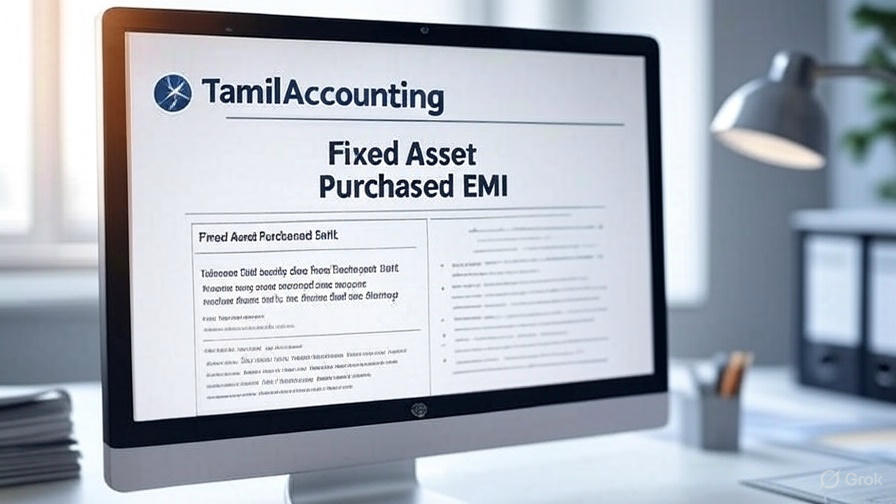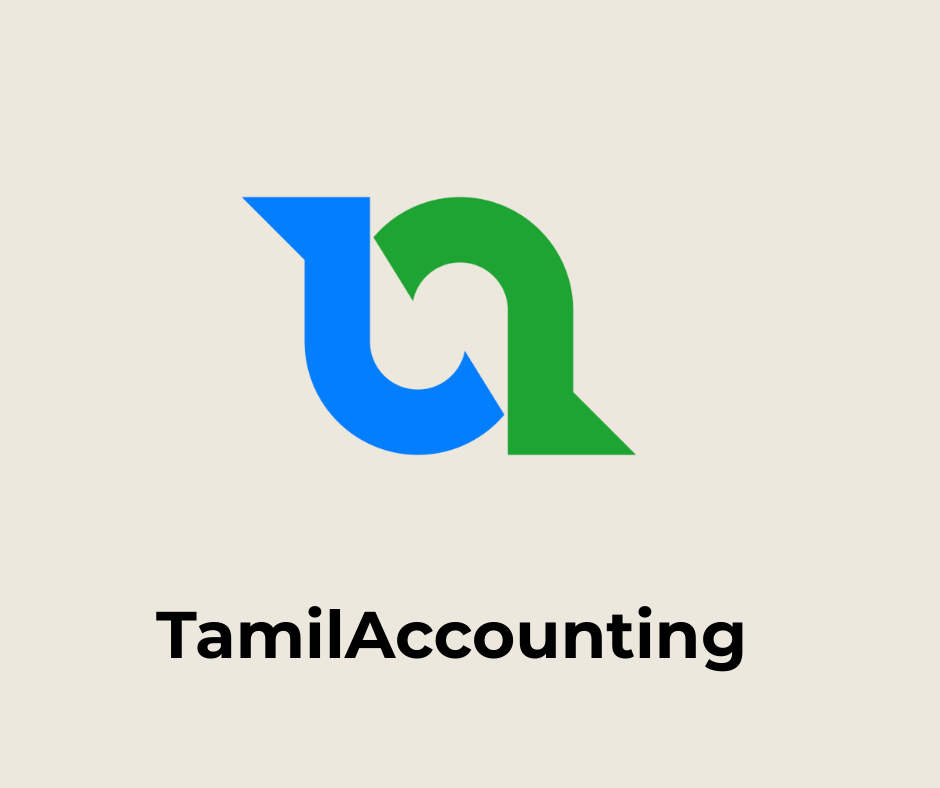
How to Manage Fixed Asset Purchase with EMI in TamilAccounting ERP
When a business purchases a fixed asset such as a lorry and finances it through a private finance company on EMI, the accounting needs to reflect the correct flow of transactions: starting from the asset purchase, recording the liability to the supplier, then compensating it through finance, and finally paying the EMI monthly.
TamilAccounting ERP is designed to handle this flow correctly by using the Fixed Asset Module, Purchase Invoice, Journal Entries, and Banking Module.
Scenario
Your business purchases a lorry worth ₹12,00,000 from Ashok Leyland. The payment is made directly to Ashok Leyland by a private finance company, and you agree to repay the finance company through monthly EMIs of ₹58,000 over 24 months, which includes both principal and interest.
Step 1: Create the Fixed Asset and Record the Purchase Invoice
First, create the fixed asset entry and then record the purchase as a payable to the supplier.
Fixed Asset:
Asset Name: Lorry
Category: Vehicles
Value: ₹12,00,000
Purchase Invoice Entry:
Go to Fixed Assets → New → Purchase Invoice, and enter the following:
-
Supplier: Ashok Leyland
-
Item/Asset: Lorry (Fixed Asset)
-
Amount: ₹12,00,000
-
Account Posting: Fixed Asset → Vehicles
-
Credit Account: Accounts Payable → Ashok Leyland
Resulting Accounting Entry:
| Account | Debit (₹) | Credit (₹) |
|---|---|---|
| Lorry (Fixed Asset) | 12,00,000 | |
| Accounts Payable – Ashok Leyland | 12,00,000 |
Step 2: Record Finance Company Paying the Supplier via Journal Entry
Ashok Leyland is paid by the private finance company, not directly by your business. You need to reflect this adjustment in your accounts using a journal entry.
Journal Entry (Finance Company Payment on Your Behalf):
Go to General Ledgers→ Journal Entry → New Entry, and enter:
| Account | Debit (₹) | Credit (₹) |
|---|---|---|
| Accounts Payable – Ashok Leyland | 12,00,000 | |
| Loan from Private Finance Co.(Non Current Liabilities) | 12,00,000 |
Step 3: Record EMI Payments Monthly from Banking Module
Every month, you repay the finance company via your bank, with each EMI consisting of a principal portion and an interest portion.
Example EMI: ₹58,000
-
Principal: ₹50,000
-
Interest: ₹8,000
Bank Payment Entry (for EMI Payment):
Go to Banking → New Payment, and enter:
-
Bank Account: Choose the bank from which payment is made
-
Supplier: Finance Company
-
Payment Amount: ₹58,000
-
Reference: Lorry Loan EMI – Month 1
-
Split the payment into two allocations:
-
₹50,000 → Loan from Private Finance Co. (to reduce principal)
-
₹8,000 → Interest on Loan (Expense Account)
-
Resulting Accounting Entry:
| Account | Debit (₹) | Credit (₹) |
|---|---|---|
| Loan from Private Finance Co. | 50,000 | |
| Interest on Loan (Expense) | 8,000 | |
| Bank Account | 58,000 |
You will repeat this process for each month until the loan is fully paid off.
Summary of Accounting Flow in TamilAccounting ERP
| Step | Module | Description |
|---|---|---|
| Record Purchase | Purchase Invoice (Fixed Asset) | Asset created, payable to Ashok Leyland recorded |
| Finance Company Payment | Journal Entry | Loan liability created, supplier payable cleared |
| EMI Payment (Monthly) | Banking → New Payment | Monthly payment with principal + interest split |
Final Notes
-
Ensure your Loan from Private Finance Co. account is grouped under Secured Loans (Non-Current Liabilities).
-
The Interest on Loan account should be placed under Indirect Expenses or Finance Charges.
-
You can optionally automate recurring EMI reminders using task alerts inside the ERP system.
-
Use reports to track outstanding loan balance and total interest paid.
This structured method ensures your asset records are accurate, supplier payments are correctly accounted for, and finance repayments are systematically tracked




